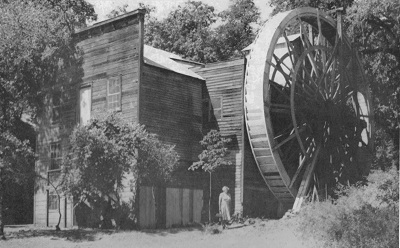Ask A Librarian, California History, Calistoga
Dr. Edward Turner Bale
Who was Edward Bale?
“When His Majesty’s Ship Harriet ran aground off Monterey in 1837, one of the few survivors to get ashore from the wreckage was Dr. Edward Turner Bale. Born at London, England, in 1811, Bale had been educated for the medical profession, receiving his commission in 1836 as the Harriet’s surgeon; the following year he made the trip around the horn to California. However unfortunate was the end of the Harriet, it could not have happened at a more propitious time for Dr. Bale, as Manuel Alva, the leading physician in the pueblo of Monterey, had recently fallen from favor in an unsuccessful attempt to overthrow Gov. Juan B. Alvarado. Bale, therefore, settled into the pleasant life of the Mexicans at the capital of Alta California.”[1]
He ran a medical practice in Monterey that brought him financial success and high connections, even if several of his patients never made it off the operating table. “His intelligence was unassailed, and his professional ability respected; but he was quarrelsome, and there were few who could abide that side of his nature.”[2] Bale eventually wed María Guadalupe Soberanes (alternately María Ignacia Soberanes), a niece of Captain Salvador and General Mariano Vallejo. His well-placed marriage helped secure a land grant from Governor Alvarado, a nephew of General Vallejo, Rancho Carne Humana, as well as a more superior position as medical examiner for the armed forces in Yerba Buena (now San Francisco). The Bales resided in Monterey, but Edward also had constructed an adobe on his rancho.
Once in San Francisco, Bale promptly got into trouble. Much to Mrs. Larkin’s chagrin, Bale ran a side business out of the home of Thomas O. Larkin, an early American pioneer in Alta California, selling medicine with a high alcoholic content. When she confronted him, he rebuffed her and the matter was taken to a local judge. “He was jailed eight days for selling alcohol from his medical offices and was sharply criticized for dispensing medicine at doses dangerously higher than usually prescribed. Moreover…he was sued for breach of contract when ‘a Frenchman’ [named Ricardo] paid him for mules which Bale never delivered. (The ‘Frenchman’ might have been the same one who lived with [George C.] Yount.”[3] Bale and Salvador did not get along, especially after Bale accused him of having an affair with María (or, according to the other version of the story, lying). Salvador bested him in a duel and had him publicly whipped, to which Bale responded by shooting at Salvador. He missed and struck Cayetano Juarez, owner of Rancho Tulucay in eastern Napa, instead. He was captured by a group of Patwin during his escape and spent some time in jail before being found guilty and let out on bail.
Bale also built a grist mill on his rancho, and hired Ralph L. Kilburn – a recent immigrant who had come to the Napa Valley via Oregon as part of the “Peoria Party” sent to colonize Oregon Country – to build and maintain a saw mill. Even the mill underwent legal complications when Bale failed to deliver 40,000 pre-paid clapboards to Larkin. Bale sold his saw mill to James Harbin in 1848 and headed north to Sutter’s Fort to try his hand at gold mining. He contracted a fever (or possibly discovered he was dying of stomach cancer) and sold off most of his rancho to Kilburn in the fall of 1849. He died October 9, 1849. Just prior to his death, Bale sold most of what was then known as Agua Caliente to William Fowler Sr. and his son Henry Fowler. The Fowlers immediately went into partnership with William Hargrave, and the two families co-owned almost all of what is now Calistoga and northern St. Helena.
[1] Albertson, D. (1949). Dr. Edward Turner Bale: Incorrigible Californio. California Historical Society Quarterly, (28)3. pp. 259-269.
[2] Ibid.
[3] Weber, L. (1998, March 26). Old Napa Valley. St. Helena Star.


